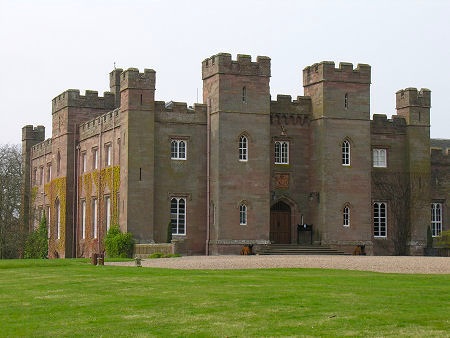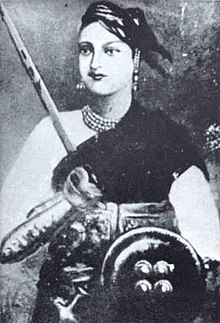The Stone of Destiny, or the Stone of Scone, is living proof that legends can be true. The Stone is a symbol of Scottish Nationalism, and the place where every Scottish king until the late 13th century was crowned. Like the Scottish people, the Stone has had a tumultuous history. But, like the Scots, the Stone has survived centuries of English rule.
The Stone supposedly has biblical origins. When Jacob wrestled with God, changed his name, and dreamt of a promised land at Beth-el (Genesis 28:11-12 , Genesis 32:28, Hosea 12:4*) he laid his head upon a stone. Legend is, the Stone of Destiny is that stone.
And how did that rock end up in Scotland? Well, supposedly Jacob held on to it. If you know anything about the Old Testament, you'll know that several decades later Jacob ended up moving his family to Egypt, where they stayed for quite a while. Here's where the Bible and Celtic legend meet. See, the Celts (well, some of the Celts) believe that they are descended from the Milesian race. The Milesians left Egypt at about the same time as the Children of Israel. Scottish legend says that Scota, a daughter of the Pharaoh, fled Egypt for Spain with her Greek husband, and that she took the stone with her.** From Spain they went to Ireland, and from Ireland, several members of the party went to Scotland. The Stone was first used in a coronation in Ireland, but it made the trip across to Scotland, where it resides today.
Now back to verifiable history. For thousands of years the stone was used in Scottish coronation ceremonies. It was just as much part of the coronation ceremony as the orb and scepter are today. The Stone was kept at Scone Palace, which is located in modern Argyle. The stone remained here until 1296 when Edward I conquered Scotland for the English. Edward took the stone back to England with him, and had it housed in the bottom of a chair, whereupon every proceeding English monarch would be crowned.
Fast forward about 700 years to 1950. The United Kingdom is somewhat less united, but it's still going strong. There's been a surge of Scottish nationalism (unsurprisingly), and a crew of four enterprising young Scots broke into Westminster Abbey, and stole the stone out of the chair. They then proceeded to sneak it back into Scotland, avoiding roadblocks and the British police. A few months went by, and the thieves left the stone in the ruins of Scone Abbey, wrapped in a Scottish flag. The stone was returned to Westminster Abbey, and was present for the coronation of Elizabeth II.
The Stone remained at Westminster Abbey until 1996, when it was finally returned to the Scots by the English government. The stone now resides in Edinburgh Castle, where it will stay until the next English monarch is crowned. After the coronation, the stone will be returned to its rightful place back with the Scottish people.
One of the questions lingering in my mind, however, is what is going to happen with the Stone when the Scots achieve independence? (Don't look at me like that, it's going to happen eventually. I'm just pointing out the signs of the times.) Will the Stone still be used in English Coronations? Will Charles or William be crowned atop the stone just as all their Hanover/Windsor predecessors were?***
Now, there are a few other mysteries surrounding the Stone. There have been continued doubts about the authenticity of the stone since its removal to England. One rumor is that the monks at Scone Abbey gave Edward I the stone cover of a cistern instead of the actual Stone of Destiny. (For more fascinating, in depth information on this, check out the Sons of Scotland link in the sources) More recently, there is speculation that the 1950 thieves replaced the stone with a replica, or another rock entirely.)
Whether or not the Stone actually came from Ancient Israel, there is no doubt that the Stone of Destiny is a strong and powerful symbol of Scottish Nationalism. It represents the Scottish people, and is a concrete reminder of a long and storied heritage of rebels and warriors. And while the Kings who were crowned upon the Stone may have been lost to history, the Stone itself will never be forgotten.
*Standard using-the-bible-as-a-source disclaimer: While the Bible may not be accepted as truth across all religions and creeds, the Old Testament provides a valuable insight into the laws and culture of the Israel-Palestine-Mesopotamia-Egypt areas of the BCEs. Whatever you believe, you cannot deny the influence that Judeo-Christian writings and ideas have had on history. I reference the LDS Edition of the King James Bible. Why? Because I'm familiar with it.
**I must take a moment to express my doubts. The Stone weighs about 336 pounds. I can't imagine hauling something that heavy from Beth-el to Egypt to Spain to Ireland to Scotland. But people do crazy things in the names of sentimentality and religion, so my doubts may be unjustified.
***Of course, we do have to consider the fact that Queen Elizabeth might just live forever. Scientists would have you believe that immortality is impossible, but I have faith in the old gal. If anyone can live forever, it'll be her.
Sources
History of the Irish Race by Seamus MacManus
The Sons of Scotland
Scone Palace
Ask History
Edinburgh Castle
Encyclopedia Britannica
Historic UK
| Aforementioned stone |
And how did that rock end up in Scotland? Well, supposedly Jacob held on to it. If you know anything about the Old Testament, you'll know that several decades later Jacob ended up moving his family to Egypt, where they stayed for quite a while. Here's where the Bible and Celtic legend meet. See, the Celts (well, some of the Celts) believe that they are descended from the Milesian race. The Milesians left Egypt at about the same time as the Children of Israel. Scottish legend says that Scota, a daughter of the Pharaoh, fled Egypt for Spain with her Greek husband, and that she took the stone with her.** From Spain they went to Ireland, and from Ireland, several members of the party went to Scotland. The Stone was first used in a coronation in Ireland, but it made the trip across to Scotland, where it resides today.
 |
| Scone Palace, where the Stone resided prior to 1296. |
Fast forward about 700 years to 1950. The United Kingdom is somewhat less united, but it's still going strong. There's been a surge of Scottish nationalism (unsurprisingly), and a crew of four enterprising young Scots broke into Westminster Abbey, and stole the stone out of the chair. They then proceeded to sneak it back into Scotland, avoiding roadblocks and the British police. A few months went by, and the thieves left the stone in the ruins of Scone Abbey, wrapped in a Scottish flag. The stone was returned to Westminster Abbey, and was present for the coronation of Elizabeth II.
 |
| Edward's Chair, the throne upon which every English monarch has been crowned. For several hundreds of years the Stone resided in this cavity at the bottom of the chair. Today, a replica stands there. |
One of the questions lingering in my mind, however, is what is going to happen with the Stone when the Scots achieve independence? (Don't look at me like that, it's going to happen eventually. I'm just pointing out the signs of the times.) Will the Stone still be used in English Coronations? Will Charles or William be crowned atop the stone just as all their Hanover/Windsor predecessors were?***
Now, there are a few other mysteries surrounding the Stone. There have been continued doubts about the authenticity of the stone since its removal to England. One rumor is that the monks at Scone Abbey gave Edward I the stone cover of a cistern instead of the actual Stone of Destiny. (For more fascinating, in depth information on this, check out the Sons of Scotland link in the sources) More recently, there is speculation that the 1950 thieves replaced the stone with a replica, or another rock entirely.)
| Edinburgh Castle, where the stone now lives. |
*Standard using-the-bible-as-a-source disclaimer: While the Bible may not be accepted as truth across all religions and creeds, the Old Testament provides a valuable insight into the laws and culture of the Israel-Palestine-Mesopotamia-Egypt areas of the BCEs. Whatever you believe, you cannot deny the influence that Judeo-Christian writings and ideas have had on history. I reference the LDS Edition of the King James Bible. Why? Because I'm familiar with it.
 |
| Flag of Scotland |
***Of course, we do have to consider the fact that Queen Elizabeth might just live forever. Scientists would have you believe that immortality is impossible, but I have faith in the old gal. If anyone can live forever, it'll be her.
Sources
History of the Irish Race by Seamus MacManus
The Sons of Scotland
Scone Palace
Ask History
Edinburgh Castle
Encyclopedia Britannica
Historic UK



